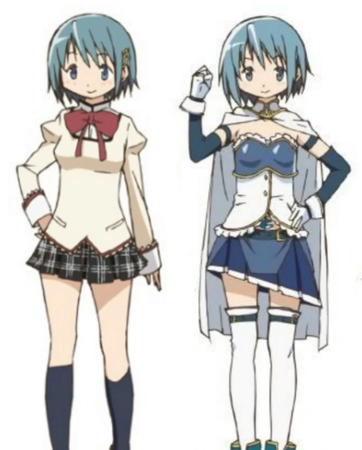Elessar Younglove (they/fae) Growing up, almost all televised romances I saw were cisgender, heterosexual relationships. According to the media, people like me didn’t exist. Queer people were not discussed in children’s media. They certainly didn’t appear as characters. According to the theory of invisibility, when a group is underrepresented in the media, individuals of that group are deprived of signals or tactics about how to be a person. I didn’t know I could like girls and boys as a child because I didn’t know such a person could exist. I certainly didn’t think that person was me. As I grew, I exposed myself to various forms of media, one of which was anime. My younger sibling and I loved to watch anime; it was how we bonded. But when we became teenagers we bonded in other ways; we both realized we were bisexual. We held on tightly to any queer or queer coded characters. This internalized “unique bond” led to the formation of parasocial relationships, which are characterized by the perception of physical and emotional intimacy with a media personality. Parasocial relationships (PSR) are mediated interpersonal relationships between media personae and audiences. PSRs may stem from our natural desire for social connections. This was especially true for me. In 2012, I was a new student at a Catholic high school. Everything was different and I didn’t have many friends. But I was about to form a unique relationship. Adolescents are particularly susceptible to parasocial romantic connections, which involve the sense of being in love with or having a strong crush on a media character. PSR with characters are not inherently positive or negative, and they are quite common. A PSR is “a seeming face-to-face relationship” formed between a media persona and audience members. PSRs influence viewers’ opinions and perceptions on various subjects like politics, race, sexuality, gender, etc. Individuals form emotional bonds to these people and fictional characters. For me, this character was Sayaka Miki. Sayaka Miki was everything I wanted to see in an animated young girl. I first saw Sayaka in high school. She whisked into my life through my favorite anime “Puella Magi Madoka Magica” and its movie sequel “Rebellion.” Both stories centered around five young girls with magical powers. All five girls were written as queer. Each girl has a crush on someone else in the group, sometimes even more than one. Sayaka first flirts with her best friend and the titular character, Madoka. Madoka arrives at school with her hair tied with red ribbons and Sayaka gives her a big hug. “You're just too cute,” Sayaka says. “I'm not gonna let you be popular with the boys. You're mine, Madoka, mine, mine, mine!”
I had never seen such open affection between two girls on television, and after deciding Sayaka and I were the same, I couldn’t look away. These connections are a common and important part of adolescent growth, allowing adolescents to securely navigate adulthood while avoiding sexual, social, and emotional dangers. In mediated social connections, the audience member has entire control over the engagement and can break off or increase the intensity of the relationship at any time without fear of rejection or social conflict. For me, this relationship was an escape from the ingrained homophobia at my Catholic high school. But I could control my relationship with Sayaka. This meant that I was free to interact with her as much as I wanted! Adolescents can maximize the benefits of romantic relationships while reducing the risks in these interactions. While peer interactions and other external variables play a role in adolescent romantic development, internal factors, particularly dreams, play a larger role in ARPA. Adolescent romantic parasocial attachments (ARPA) can be defined as “perceived romantic relationships with media figures in adolescence, which (a) involve the investment of time, energy, and emotion on the part of the adolescent; (b) are mediated; and (c) involve some degree of idealization.” I clung to this ARPA because, as a closeted bisexual teenager, I was underrepresented. When a group is underrepresented in the media, individuals of that group are deprived of signals or tactics about how to be a person. I felt invisible, and so I became invisible. We define fantasy as a distinct combination of emotions and cognitions used to create an imagined story, which may contribute to romantic parasocial attachments in a unique way. Through Sayaka, I explored queer attraction and bisexuality. In reality, fantasy and imagination play a significant part in all social interactions. I couldn’t separate my sexuality from my fears of rejection. But Sayaka showed me a girl who loved boys and girls, who fought monsters to be with those she loved. Fantasy is a healthy element of growth for adolescents, and it plays a major role in their sexual and romantic life. Sayaka made me feel seen, even loved. She never faced backlash for liking both boys and girls. Her friends accepted her. She even rescued her crush Kyoko, another queer girl. On a special mission the two were reunited. “But the reason I ended up taking this assignment and coming back,” Sayaka said, “was because I actually did have one regret. The fact that I left you behind.” Because I interpreted Sayaka as bisexual I believed we had a unique connection. She was everything I wanted to be. And so, I became myself.
0 Comments
Leave a Reply. |
Search by typing & pressing enter

